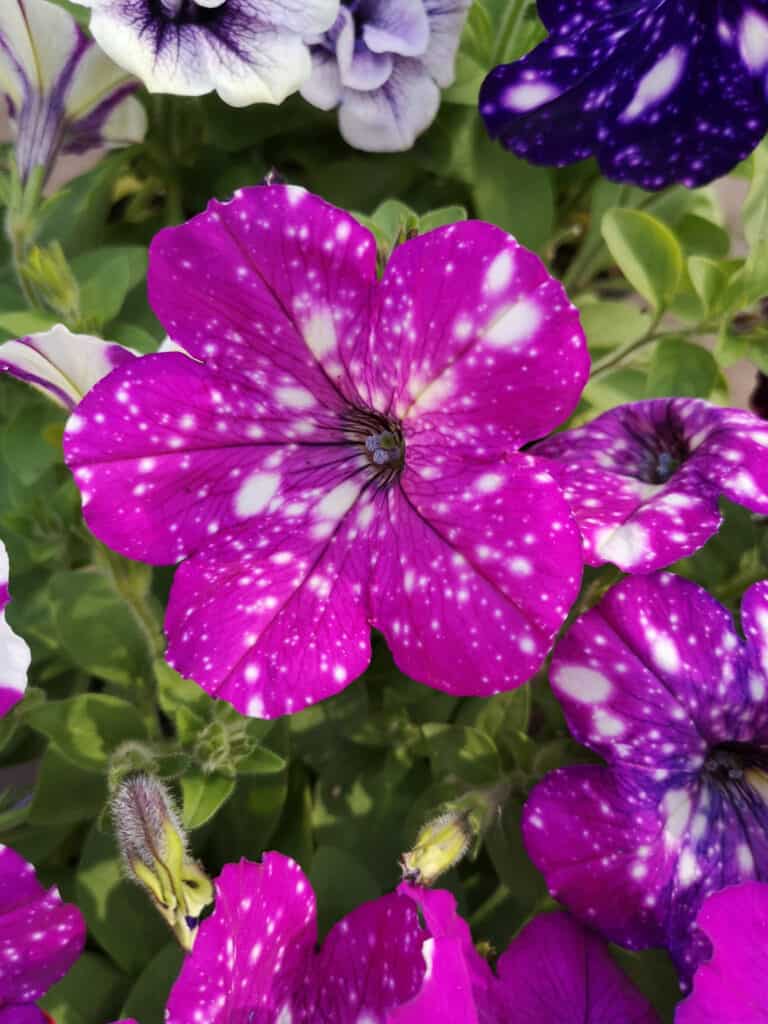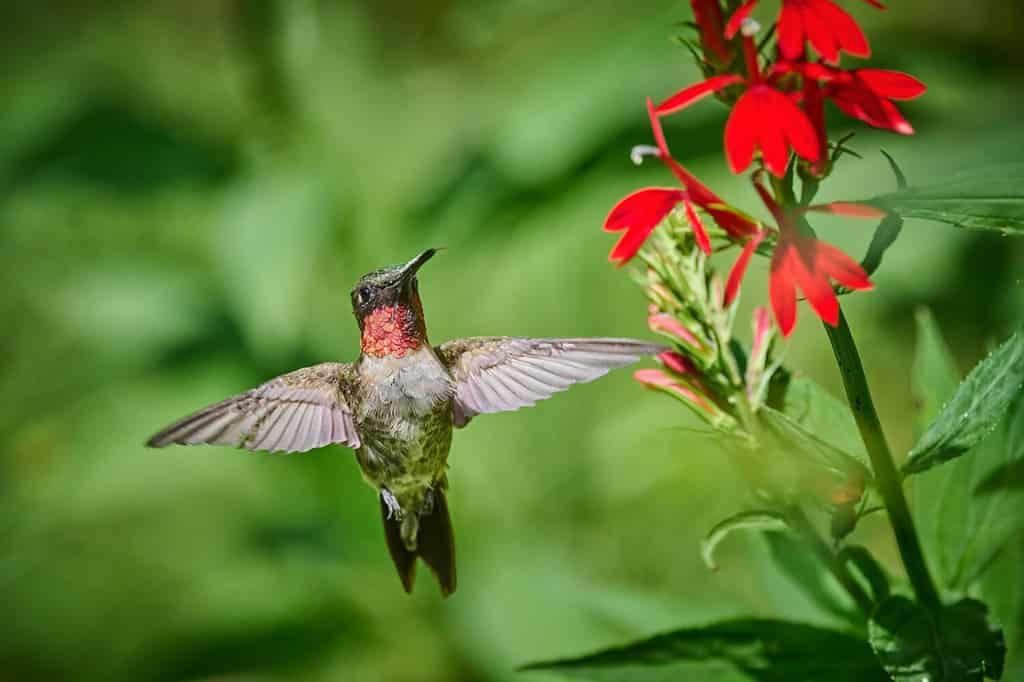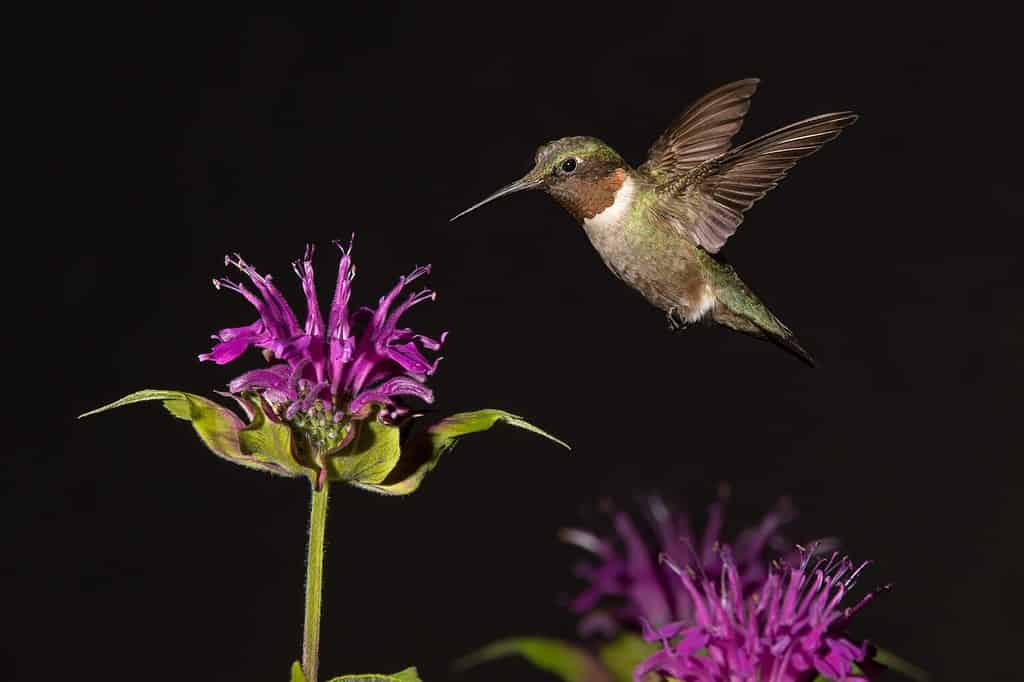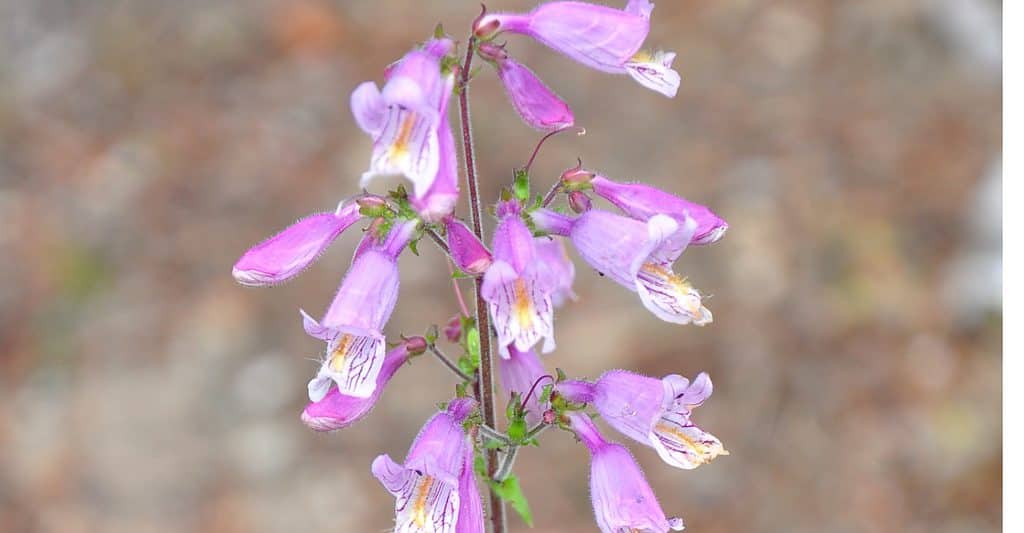Quick Answer
Yes, hummingbirds do like petunias, but they may not be the top choice. Keep reading below to discover more.
Hummingbirds are nature’s delicate and enchanting creatures that bring joy and wonderment to any garden. Their vibrant colors, incredible hovering abilities, and swift movements make them a captivating sight for birdwatchers and nature enthusiasts alike. For those who wish to attract these tiny visitors to their gardens, the choice of flowers plays a crucial role.
In this article, we will explore the fascinating question: Do hummingbirds like petunias? We will delve into the reasons behind their attraction to these beautiful flowers and provide valuable growing tips. We will uncover five other flowers that hummingbirds adore, giving you the opportunity to create a flourishing haven that these delightful creatures will love to visit. So, let’s embark on this journey into the mesmerizing world of hummingbirds and discover how to make your garden an irresistible haven for these tiny avian wonders!
Do Hummingbirds Like Petunias?

Hummingbirds do like Petunias due to their bright colors and tubular-shaped flowers filled with rich nectar.
©https://tenrandomfacts.com/petunia//Shutterstock.com
Yes, hummingbirds do like petunias, but they may not be the top choice. While hummingbirds are known to visit petunias occasionally, they are not considered a primary nectar source for these birds. Petunias are brightly colored, tubular-shaped flowers that are filled with nectar, making them attractive to hummingbirds. Therefore, they are still a popular choice for gardeners looking to attract these tiny birds.
Petunias come in a wide range of colors and are known for their ability to produce abundant blooms, providing a rich source of nectar for hummingbirds. Planting petunias in your garden can help create a welcoming environment for hummingbirds, allowing you to enjoy their presence and beauty.
How To Plant Petunias:
To plant petunias, follow these steps:
Choose a suitable location: Petunias thrive in full sun, so select a spot in your garden that receives at least 5 to 6 hours of direct sunlight each day. Ensure the location is protected from strong winds.
Prepare the soil: Petunias prefer moderately fertile soil. If your soil is poor, amend it with compost or organic matter before planting to improve its fertility and drainage.
Dig the holes: Dig holes that are slightly larger than the root ball of your petunia plants. Space the holes according to the recommended spacing for the specific variety you are planting.
Plant the petunias: Place each petunia plant in a hole, ensuring that the top of the roots is just below the ground’s surface. Gently backfill the hole with soil and press it down lightly to secure the plant in place.
Water the newly planted petunias: After planting, water the petunias thoroughly to help settle the soil and provide moisture to the roots. Continue to water regularly, keeping the soil evenly moist but not waterlogged.
Provide ongoing care: Fertilize the petunias every few weeks with a balanced, water-soluble fertilizer to promote healthy growth and abundant blooms. Remove any spent flowers to encourage continuous blooming.
Five Other Flowers Hummingbirds Love
Just because petunias are not a top choice for hummingbirds, does not mean you should give up on attracting these mesmerizing creatures to your garden. There are numerous other flowers that hummingbirds absolutely love. Here are five examples:
1. Cardinal Flower

Ruby-throated hummingbirds love Cardinal flowers.
©Patrick Jennings/Shutterstock.com
Known for its vibrant red blooms, the cardinal flower (Lobelia cardinalis) is a favorite of hummingbirds. Its tubular-shaped flowers are perfectly suited for their long beaks.
2. Bee Balm

Hummingbirds are wildly attracted to Bee Balm.
©Matt Cuda/Shutterstock.com
Bee balm (Monarda) produces clusters of colorful flowers in shades of red, pink, and purple. The tubular shape of the flowers makes them irresistible to hummingbirds.
3. Penstemon

Hummingbirds especially love Penstemon, also known as beardtongue.
©iStock.com/rbiedermann
Penstemon, also known as beardtongue, features tall spikes of tubular flowers in various colors, including red, pink, purple, and white. Hummingbirds are particularly fond of the red varieties.
4. Trumpet Honeysuckle

Trumpet Honeysuckle (Lonicera sempervirens) is a popular flower for attracting hummingbirds.
©shepherdsatellite/Shutterstock.com
Trumpet honeysuckle (Lonicera sempervirens) produces clusters of tubular, red-orange flowers that hummingbirds find irresistible. It also provides a source of nesting material for them.
5. Agastache

Hummingbirds love the nectar-rich blooms of Agastache, also known as
hummingbird
mint.
©Alex Manders/Shutterstock.com
Agastache, commonly known as hyssop or hummingbird mint, produces spikes of tubular flowers in shades of purple, pink, and orange. Hummingbirds are attracted to their nectar-rich blooms.
Tips for Creating a Hummingbird-Friendly Garden

Hummingbirds will often flock to a variety of flowers that are colorful and filled with nectar.
©Bonnie Taylor Barry/Shutterstock.com
Creating a hummingbird-friendly garden involves providing the right elements to attract and support these beautiful birds. Here are some tips to help you create a hummingbird-friendly garden:
Plant nectar-rich flowers:
Choose flowers that produce abundant nectar, such as the ones listed in this article. Plant a variety of colors and shapes to attract a diverse range of hummingbird species.
Provide a water source:
Hummingbirds need water for drinking and bathing. Place a shallow birdbath or a small fountain in your garden to provide a water source for them. Make sure to keep the water clean and fresh.
Create vertical elements:
Hummingbirds love perching on tall structures. Install trellises, arbors, or tall plants like sunflowers or hollyhocks to provide perching spots for them.
Include native plants:
Native plants are well-adapted to your local environment and are often more attractive to hummingbirds. Research native plants in your area that are known to attract hummingbirds and incorporate them into your garden.
Avoid pesticides:
Pesticides can be harmful to hummingbirds and other beneficial insects. Opt for natural pest control methods or choose plants that are naturally resistant to pests.
Provide shelter and nesting sites:
Hummingbirds need sheltered areas to rest and build their nests. Plant shrubs or trees with dense foliage to provide cover and nesting sites for them.
Hang hummingbird feeders:
Supplement natural nectar sources with hummingbird feeders. Use a solution of four parts water to one part white granulated sugar and avoid using red dye or artificial sweeteners. Clean and refill the feeders regularly to prevent the growth of mold or bacteria.
Maintain a pesticide-free zone:
Create a designated area in your garden where no pesticides or herbicides are used. This will provide a safe haven for hummingbirds and other wildlife.
In Conclusion
While petunias may not be the top choice for attracting hummingbirds, they can still serve as a valuable addition to your hummingbird oasis. There are also many other flowers and elements you can incorporate to create a hummingbird-friendly garden. By providing the right combination of nectar-rich flowers, water sources, perching spots, and native plants, you can invite these enchanting birds to grace your garden with their presence and enjoy the wonders of nature right in your own backyard.
Cardinal flowers, bee balm, penstemon, trumpet honeysuckle, and agastache, can create a hummingbird haven that will entice these magnificent creatures to visit your garden regularly. Remember to choose a diverse range of colors, shapes, and sizes to cater to different hummingbird species and their preferences.
The photo featured at the top of this post is © Deniss Grigorjevs/Shutterstock.com
Thank you for reading! Have some feedback for us? Contact the AZ Animals editorial team.







